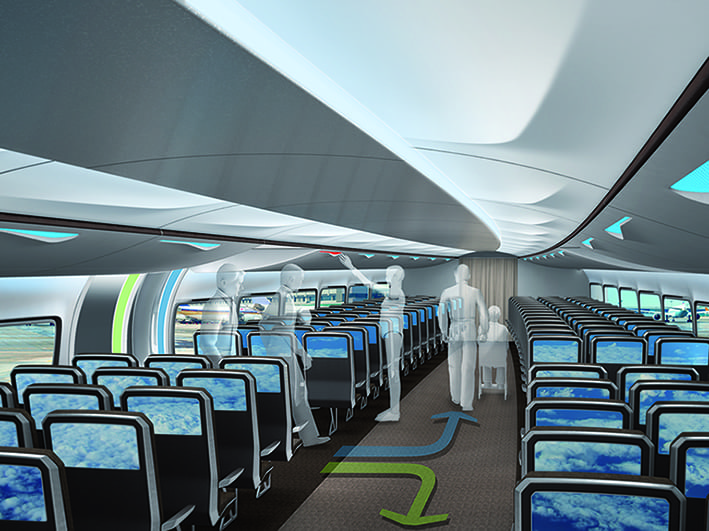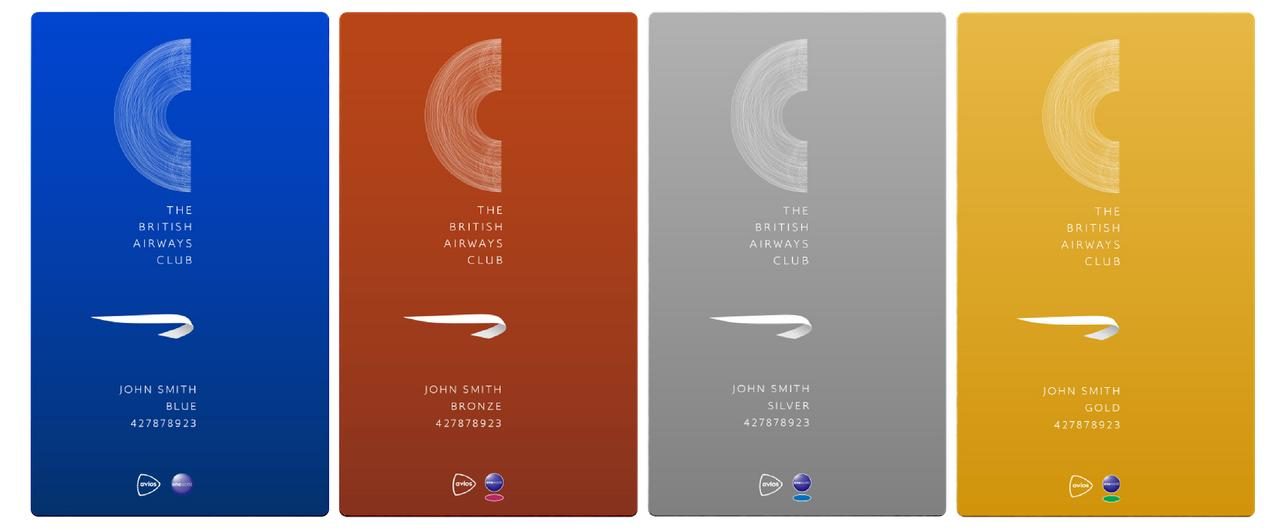The New Aircraft Design That Could Solve Boarding Nightmares

Skift Take
- Rendering of CIGAR center boarding.
- Rendering of CIGAR center boarding.
Boarding aircraft is probably one of the most tedious and stressful parts of air travel, but transport designer, Urgur Ipek, of Ugur Ipek Design, Germany, believes it’s all due to the impractical shape of cabin interiors.
Instead of the traditional uniform cylinder, he proposes that boarding would be much simpler on a cigar.
Ipek’s CIGAR is a modular concept which considers the boarding process in the cabin layout. Featuring an “anti-blocking aisle,” the cigar has passengers board from the center of the plane, where the aircraft aisle would be wide enough for airlines to place a welcome lounge. The aircraft aisles taper down as they near either extreme of the plane, towards the tail and the cockpit.
By tapering the aisles in this fashion, Ipek points out, aircraft manufacturers and cabin designers would leave room for everyone seated in the rows furthest from the entry to easily move past those passengers putting up their luggage and getting settled. As seats near the two extremes of the plane, the demand to get past is lower and the narrowness of the aisles is less problematic. By boarding at the center, passengers would also have a shorter distance to travel to find their seats. Both of these combined would make aircraft boarding smooth, efficient, and less stressful.
Ipek also proposes a double door entry at the centre of the plane, making the boarding area wider, to enhance the sense of entering a lounge and change the perception of entering an aircraft we’ve built up over the years. This part of his proposal, however, is a bit trickier for airframe manufacturers who have established a practice of design for the fuselage, which includes single doors.
“The main issue creating a big door is the weakening of the structure of the pressurized tube,” explains Ipek, who worked on the CIGAR concept as an advanced design project commissioned by the cabin innovation department at Airbus Hamburg 2005/2006. Airbus immediately began a global patent process after his proposal, so Ipek has not been free to discuss it this many years, but the CIGAR has found its way to the Crystal Cabin Award judges panel, as one of the proposals reviewed this year. “As I wanted to increase the flow rate, I decided to have two doors next to each other," he says. "In between, I have left one structural frame for the locking mechanism.”
The issue of double doors aside, the central boarding and aisle tapering is the critical benefit of the CIGAR concept, and Ipek built in plenty of incentive for aircraft manufacturers and airlines to give the CIGAR serious consideration.
“It works, definitely, with one door,” says Ipek. “In addition to the enhanced boarding, the concept of radial modularity [the process through which the frame of a CIGAR cabin is installed inside the fuselage] would save a lot of money when it comes to development, manufacturing, spare parts logistics, etc. The big center was favored by the engineers as it gave structural strength in the area of the belly fairing, where the wings are attached. Applied to twin aisle aircraft, the wide centre aisle offers even greater flexibility in terms of new revenue streams: a gym, bar, duty free shop, etc.”
The inspiration for the CIGAR’s design came to transport designer Ipek in his childhood. “I had architecture in my mind,” he says. “When I was strolling as a kid through the old town in Istanbul, I was always fascinated by the huge cupola in the Hagia Sophia and the old bridges. I was impressed by this construction method which was simple, light, and strong. I wouldn’t have imaged to use it to create a high-tech product like a jetliner, but, later, in the development of the A380, which I worked on from the very beginning, we applied the concept for the first three window panels in the A380 main deck, between door one and door two. Facing the problem with the tapered aisle, I translated that to the whole airframe.”
Speaking of the CIGAR’s acceptance in the industry, Ipek tells us: “The feedback was very positive. Plans were big. But at the moment, Airbus is not developing any new aircraft,”
Though some of the principles of its design benefit the A380 flying today, the CIGAR it is still a far flung-concept for the aircraft of tomorrow. That’s the era Ipek lives in, anyway, so he’s comfortable waiting for the rest of the world to catch up.






